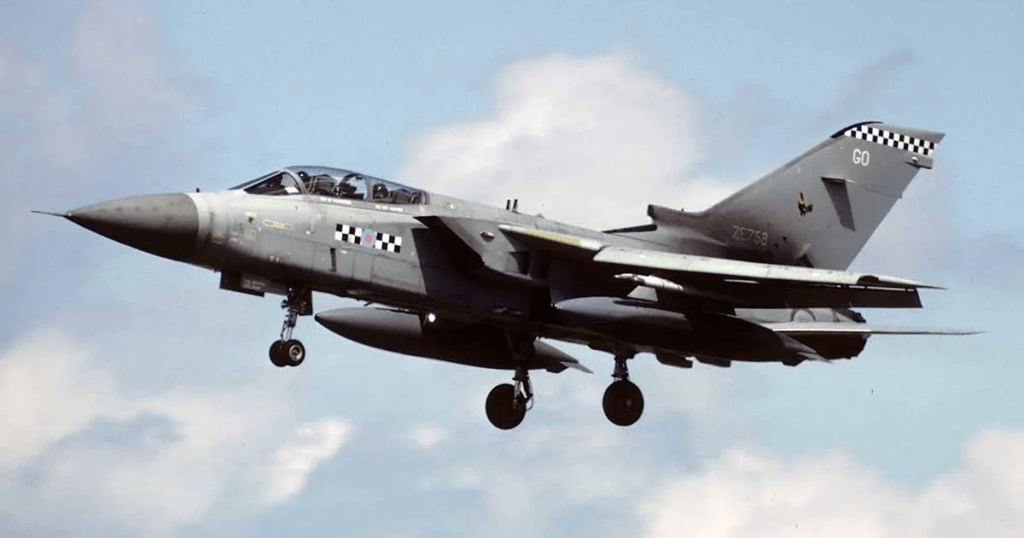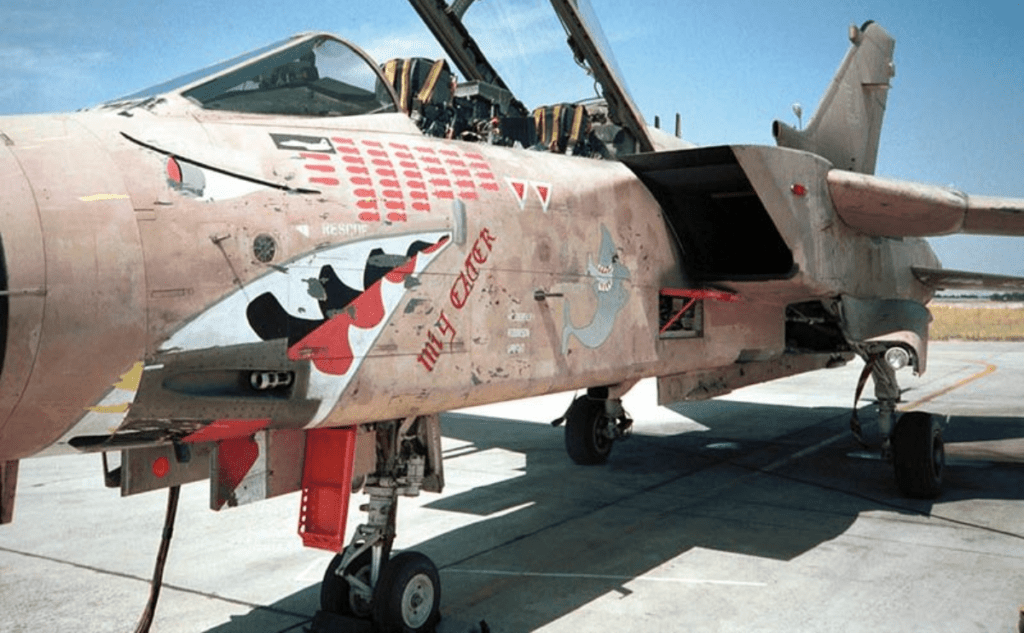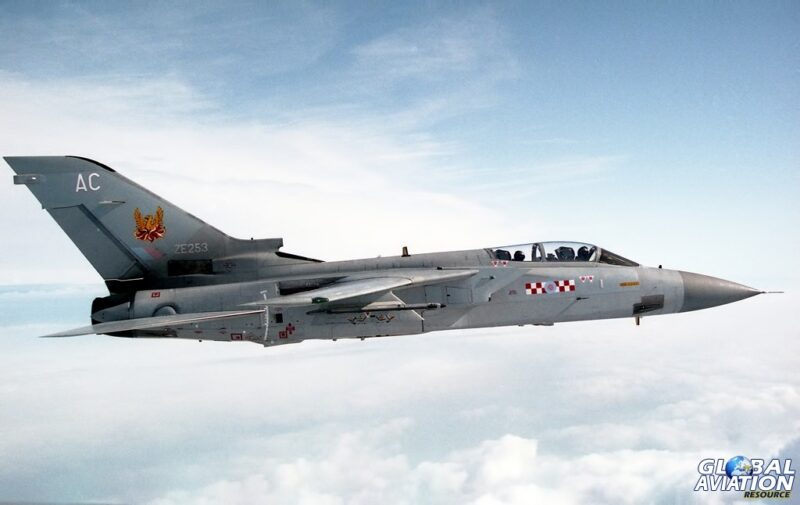The Tornado ADV: History, Role, Performance, and Legacy
The Tornado ADV (Air Defence Variant) was a cornerstone of NATO’s aerial defense strategy during the Cold War, known for its role as a high-speed, long-range interceptor. While often overshadowed by its ground-attack sibling, the Tornado IDS (Interdictor/Strike), the ADV offered unique capabilities that made it a valued asset in air defense.
This post explores the Tornado ADV history, its design philosophy, operational use, and performance specifications. We’ll also touch on its relationship with the Tornado IDS, its effectiveness during conflicts, and its potential future as a module in DCS World.
Development of the Tornado ADV

The Tornado ADV emerged from a need for a dedicated interceptor capable of defending NATO airspace during the height of the Cold War. Designed by the multinational consortium Panavia (comprising British Aerospace, MBB of Germany, and Alenia Aeronautica of Italy), the ADV shared much of its design with the Tornado IDS but diverged in its role and mission profile.
Primary Role
The Tornado ADV was intended to counter Soviet bombers and cruise missile carriers. Its mission required long endurance, a potent radar system, and high-speed capabilities to intercept threats at extended ranges. The ADV filled a niche that aircraft like the Lightning and Phantom II struggled to address effectively.
Design Features of the Tornado ADV
While the ADV shares the Tornado IDS’s airframe and variable-geometry wing design, significant modifications were made to tailor it to its air-superiority mission.
Airframe and Avionics

- Radar System: The ADV was equipped with the Foxhunter radar, a powerful system capable of detecting, tracking, and engaging multiple targets at long range. While innovative for its time, the Foxhunter faced initial reliability issues that were later rectified.
- Fuselage: Extended by 1.36 meters to accommodate the Sky Flash medium-range air-to-air missiles and additional fuel for extended range.
- Weapons Loadout: It carried AIM-9 Sidewinders for close-range engagements and AIM-7 Sparrow or later AIM-120 AMRAAM missiles for medium-range interception.
- Crew: The ADV, like the IDS, featured a two-crew configuration: a pilot and a weapons systems officer (WSO). This setup reduced pilot workload, especially during complex interception missions.
Performance Specifications
- Maximum Speed: Mach 2.2 at altitude.
- Combat Radius: 1,390 km with air-to-air armament.
- Service Ceiling: 50,000 feet.
- Thrust: Powered by two Turbo-Union RB199-34R Mk 104 engines, delivering over 16,000 pounds of thrust each.
- Joystick / HOTAS – AMAZON.com
- Rudder Pedals – AMAZON.com
- Throttle Quadrant – AMAZON.com
- Gaming Chair – AMAZON.com
- VR Headset – AMAZON.com
Operational History and Effectiveness

The Tornado ADV first entered service with the Royal Air Force (RAF) in 1985, gradually replacing the Lightning F.6 and Phantom FGR.2 in the air defense role.
Nations that Operated the Tornado ADV
- United Kingdom: The primary operator, with the aircraft serving until its retirement in 2011.
- Saudi Arabia: Operated a customized version of the ADV (Tornado F3), which played a role in Gulf region defense.
- Italy: Operated the ADV under lease for a short period in the 1990s.
Gulf War and Iraq Operations
While the Tornado IDS became synonymous with daring low-level strike missions during the Gulf War, the ADV’s contribution was more subdued. Tasked with defending coalition airspace, it performed interception patrols but was not heavily involved in air combat.
Its radar and weaponry were effective against Iraqi aircraft, but no significant dogfight engagements occurred during these operations. However, the Tornado ADV provided a deterrent against hostile air operations and ensured air superiority.
The Tornado IDS in Comparison
As someone who worked on the Tornado IDS in Saudi Arabia, you’ll know firsthand the significance of this variant in strike missions. Unlike the ADV, the IDS was designed for low-level penetration, equipped with precision-guided munitions and advanced terrain-following radar.


Successes in the Gulf War
The Tornado IDS proved its mettle during the Gulf War, performing deep-strike missions against airfields, bridges, and command centers. Despite facing heavy anti-aircraft fire, it demonstrated remarkable survivability and mission success rates.
Challenges and Losses
Low-level attack profiles exposed the Tornado IDS to significant risks from surface-to-air missiles (SAMs) and AAA fire. Some losses were incurred during early operations, prompting a shift to medium-altitude tactics combined with laser-guided bombs.
The two-crew configuration in both the ADV and IDS was invaluable during these high-stress missions, allowing one crew member to focus on navigation or weapons systems while the other piloted the aircraft.
Strengths and Weaknesses of the Tornado ADV
While the Tornado ADV was well-suited to its interceptor role, it was not without criticism.

Strengths
- Long-Range Interception: Its extended range made it ideal for patrolling large areas of airspace, such as the North Sea and Arabian Gulf.
- Crew Efficiency: The two-crew setup allowed for more complex mission profiles compared to single-seat fighters like the F-16.
- Weaponry: Its missile suite was effective for both long-range and short-range engagements.
Weaknesses
- Dogfight Limitations: The Tornado ADV was not as agile as contemporaries like the F-15 or MiG-29, limiting its effectiveness in close-quarters combat.
- Radar Issues: Early reliability problems with the Foxhunter radar tarnished its reputation.
- Multirole Competitors: As multirole fighters like the Eurofighter Typhoon emerged, the ADV’s single-mission focus became a liability.
Legacy and Potential in DCS World
The Tornado ADV and IDS left a lasting legacy in military aviation, remembered for their versatility, speed, and the collaborative engineering efforts that created them.

Potential in DCS World
With the growing popularity of DCS World, the Tornado, particularly the IDS, has been a long-awaited addition by fans. Its variable-sweep wings, two-crew dynamics, and mission versatility would make it an exciting module.
The ADV could complement this by offering players a dedicated interceptor role, recreating the Cold War tension of defending airspace against potential threats. The challenge of mastering radar systems, coordinating between pilot and WSO, and engaging in high-speed interceptions would add depth to the simulator.
Conclusion
The Tornado ADV was a specialized aircraft tailored to meet the unique demands of NATO’s air defense strategy during a pivotal era. While not as celebrated as the Tornado IDS, its contributions to airspace defense and its legacy in nations like the UK and Saudi Arabia are undeniable.

For aviation enthusiasts and flight simmers, the Tornado remains a fascinating subject. Its dual-crew setup, cutting-edge (for the time) avionics, and storied operational history make it a compelling choice for a future DCS World module. Should it become available, it would undoubtedly add a new dimension to the simulation experience, paying homage to one of the Cold War’s most distinctive interceptors.
- Latest CPU’s Available Now – Amazon.com
- Get a NEW GPU Best Performance – AMAZON.com
- Upgrade RAM Here today – AMAZON.com
- Prebuilt PC Options – AMAZON.com
Author
Brendon McAliece (Aka Gunnie) is a military veteran with 23 years working on Jet Fighters, their weapons systems and ejection seat/module systems as well as munitions and R&D. Involved with flight simulation since the 1980s, he has flown all the major flight simulators over the years.
He is an Australian expat who has lived in Malaysia, UK, Saudi Arabia and more recently Thailand. He is a multi-lingual blogger who loves to share his life experiences here on LetsFlyVFR.com and DreamingGuitar.com, with his lifestyle and Travel experiences Blog plus his Dreaming Coffee website.
Learn More @ DreamingGuitar.com – DreamingCoffee.com – LetsFlyVFR.com
( HOME – BLOG – SHOP – ABOUT )
As an Amazon affiliate I may benefit from qualifying sales.









